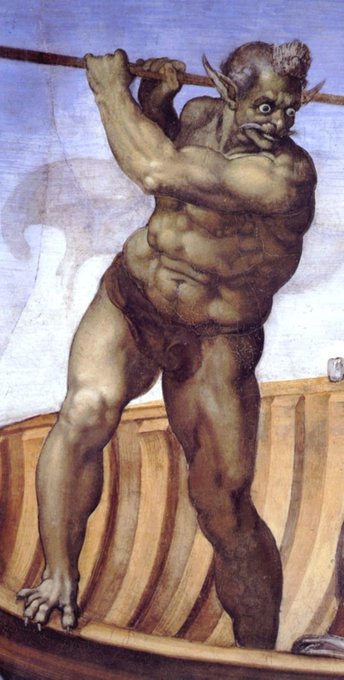funeraryのTwitterイラスト検索結果。 71 件中 4ページ目
70. Spirit Lantern - Containing the dying breath of a unknown entity, this lantern is often used by Funerary priests to identify the fallen bodies on the battlefield.#dnd5e
Get your hands on your deck of magic item cards from my online shop!: https://t.co/I9zhmY0DXR
#History: #funerary mask, #MiddleEast, Chalcolithic period (5,000-3,000 BC)
https://t.co/Xm5CTrAKF0 via @davegray
The Obol was an ancient greek coin made of bronze, copper or silver and popular for funerary use. Deceased were buried with obol coins in their mouth to pay the ferryman Charon for the passage across the rivers Styx or Acheron.
#FolkloreThursday #folklore #mythology #myths
How to make sense of the juxtaposition of a quintessential Chinese tombstone & a funerary couch turned into a Sasanian-style gilt vessel? My conclusion: An Jia saw himself as a mediator between Chinese & Sasanian cultures; he celebrated this dual identity with remarkable stones.
#History: #funerary mask, #MiddleEast, Chalcolithic period (5,000-3,000 BC)
https://t.co/Xm5CTrAKF0 via @davegray
How do we recognise "play" in the ancient world? Children were likely more socialised with adults than today; most depictions of "games" (like this from the tomb of Baqet III at Beni Hasan, c. 2000 BCE) come from religious or funerary contexts. This ball is from Kahun #PlayMW
Naglfar is a battleship to be made of the dead's nail clippings (why Norse funerary rites included trimming the nails) and if completed, it slipping its moorings into the ocean is one of the events of Ragnorok (appocalypse).
#FolkloreThursday
Viking Storm by KenHuys on Devianart
Just in time for Halloween is this spooky piece by @SimulDraws of werewolf funerary rituals. https://t.co/yxwFRi4ZrZ
























